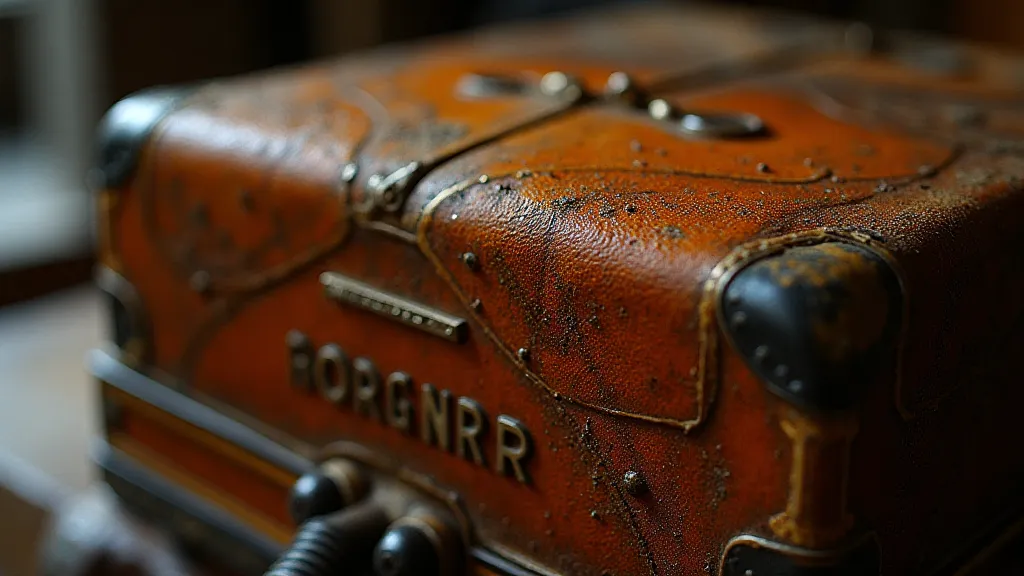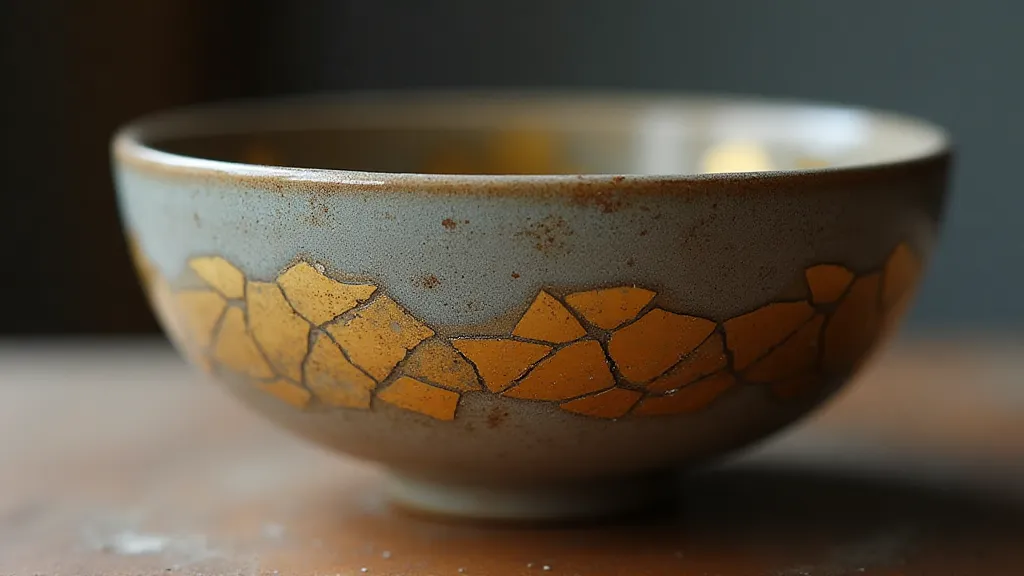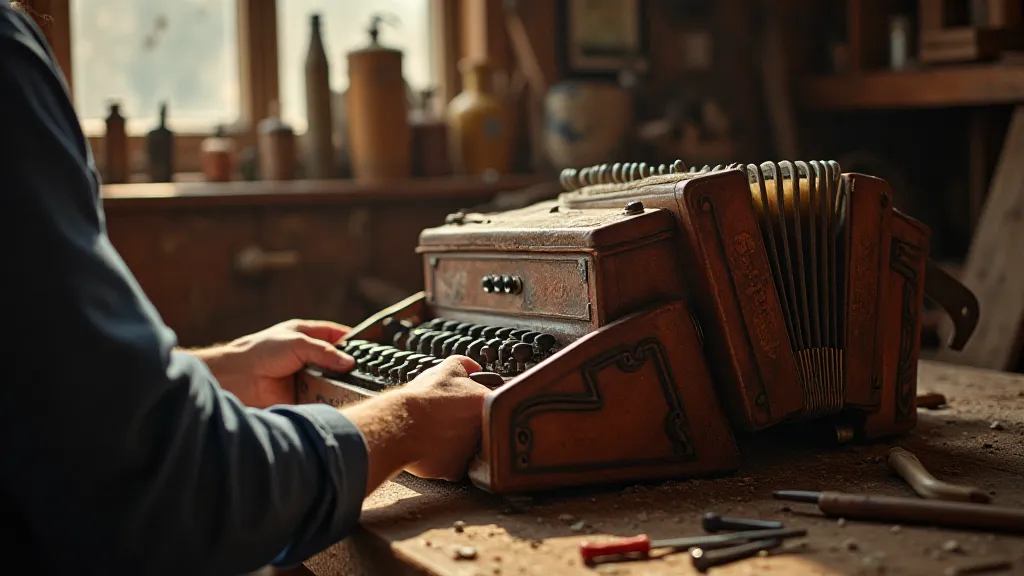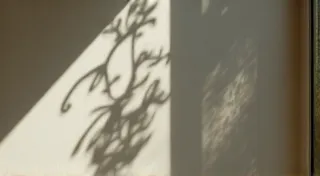Fractured Perspectives: Embracing Multiple Narrators
There's a profound beauty in imperfection. It’s a concept at the heart of Japanese philosophy, and nowhere is it more elegantly embodied than in the ancient art of Kintsugi – the art of repairing broken pottery with gold. It's a practice that transcends mere restoration; it’s a celebration of damage, a philosophical statement woven into the ceramic itself. Thinking about Kintsugi recently, I realized how powerfully its principles can be applied to storytelling, particularly in our growing fascination with narratives told from multiple perspectives.
I’m a collector of antique accordions. Not for their musical proficiency – though they certainly can produce delightful sounds – but for their history, their soul. Each accordion I'm fortunate enough to acquire carries the echo of a life lived, a song played, a story told. Many are heavily scarred – cracks in the bellows, missing keys, faded ornamentation. Some were abandoned, forgotten, casualties of changing tastes or simply the ravages of time. I remember finding one, a Hohner Monarch, at a flea market. Its bass buttons were missing, and the leather bellows were brittle and cracked. It was a shadow of its former self. I could have discarded it, treated it as worthless junk. But I saw something in it; a potential, a story waiting to be rediscovered. Repairing it felt like giving voice to a silent history.

The Philosophy of Wabi-Sabi and Kintsugi
Kintsugi, literally “golden joinery,” stems from the broader Japanese aesthetic philosophy of wabi-sabi. Wabi emphasizes simplicity, humility, and authenticity. Sabi acknowledges the beauty of age and the marks of time. Unlike Western cultures that often strive for flawless perfection, wabi-sabi finds beauty in transience and imperfection. This isn't about shying away from flaws; it’s about actively celebrating them. A chipped teacup, a faded kimono, a cracked accordion – these aren't defects to be hidden; they’ve become part of the object's story, its unique identity.
The origins of Kintsugi are often traced back to the 15th century, with a legend involving a shogun who, displeased with the clumsy repair of his favorite tea bowl, commissioned a craftsman to devise a more beautiful method. The result was Kintsugi, a technique that not only mended the broken pieces but also highlighted the repair with lacquer dusted with gold, silver, or platinum. The cracks become visible, shimmering veins that tell a story of breakage and healing. The value isn't diminished by the damage; it's arguably enhanced.
From Pottery to Prose: Multiple Narrators and Layered Truths
The parallels between Kintsugi and the rise of multiple-narrator storytelling are striking. For decades, the dominant narrative structure in literature, film, and even journalism was linear, often presenting a single, authoritative voice. We were expected to accept this voice as the definitive version of events. But in recent years, we’re seeing a shift. Writers are increasingly employing multiple perspectives, weaving together fragmented narratives from different viewpoints to create a richer, more nuanced understanding of a single event.
Think of it like examining a shattered pot. A single fragment can only offer a partial view. It might show a chip, a crack, a glimpse of the inner clay. But to truly understand the pot – its form, its function, its history – you need to see all the fragments, to piece them together, to see how they relate to one another. Similarly, a single narrative voice, however compelling, can be limited by its inherent biases and perspectives. Multiple voices, even contradictory ones, offer a more complete, albeit complex, picture.
Consider a historical event like World War II. It’s tempting to rely on a single account – a memoir, a documentary, a historical textbook. But each of these offers only a sliver of the truth. To truly grapple with the enormity of the conflict, you need to hear from soldiers on both sides, from civilians caught in the crossfire, from political leaders making life-or-death decisions. The contradictions, the ambiguities, the conflicting accounts – these aren't weaknesses in the narrative; they're opportunities for deeper understanding.

The Challenge of Fragmentation and the Power of Empathy
Embracing multiple narrators isn’t without its challenges. It can be disorienting, demanding that the reader actively piece together disparate fragments. It requires a willingness to suspend judgment, to acknowledge the validity of perspectives that may conflict with our own. The reader must become an active participant in the storytelling process, rather than a passive recipient of information. It can be overwhelming, and easily lead to a feeling of unease.
However, this discomfort is often the key to unlocking deeper insights. By forcing us to confront different viewpoints, multiple-narrator storytelling fosters empathy and challenges our assumptions. It reminds us that truth is often multifaceted and that our own perspectives are inevitably shaped by our individual experiences. It encourages a more critical and nuanced understanding of the world around us.
Restoring an antique accordion, much like crafting a Kintsugi repair, requires patience and a willingness to embrace imperfection. You can’s erase the history of the instrument; you can only honor it. You highlight the scars, the cracks, the missing pieces, recognizing that these are integral to its character. Similarly, in storytelling, we shouldn’t shy away from the complexities and contradictions of human experience. We should embrace the fragmented perspectives, allowing them to enrich our understanding of the whole.

Finding Beauty in the Broken
Kintsugi teaches us that brokenness isn’t an end; it's an opportunity. It’s a chance to create something new and beautiful from the fragments of the old. And in a world that often demands perfection, it reminds us of the profound beauty that can be found in embracing our imperfections, both as individuals and as storytellers. Whether it's a shattered pot, a forgotten accordion, or a complex narrative, there’s a unique and enduring power in celebrating the scars that make us who we are.





